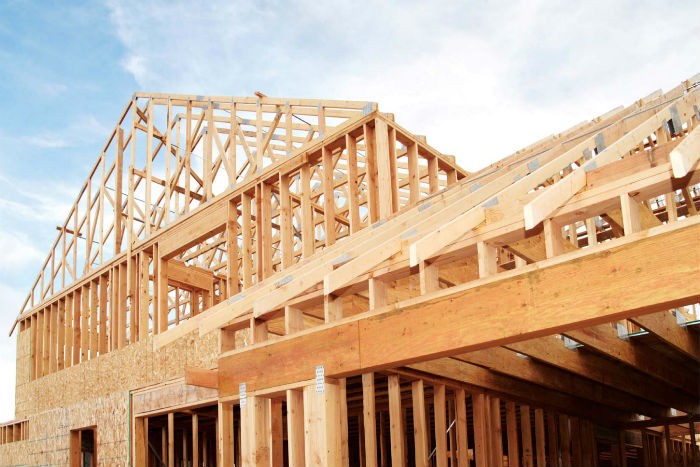Builders Check List
Worksafe Victoria has a number of useful resources to make sure your building sites are compliant. If you would like to speak to Rent A Loo regarding site toilets, please call us on 0409 783 399.
1. Is the site secure?
Once you have taken control of a building site in a populated area, secure it. Put a chain mesh fence or plywood hoarding at least 1.8 metres high (or 2.4 metres high for demolition sites) around your site with lockable gates. Lock up the site whenever it is unattended to prevent children or other people from wandering in to danger.
2. Have you provided the right amenities for the workers?
Workers need clean and hygienic portable sheds or other suitably protected areas where they can change and store clothing, eat meals and take shelter from bad weather. Provide lunch rooms with heaters and airconditioning (or other effective cooling fans), a refrigerator and a microwave oven or pie warmer. Provide a ready supply of cool, clean drinking water. Make sure workers have easy access to clean and well maintained toilets and washing facilities.
3. Are your first aid and emergency systems in place?
Have a sufficient number of qualified first aiders for the size of the job. Always have a first aider on site whenever work is occurring. Keep a well maintained first aid kit in a suitable location. Place a prominent Notice near your telephone which lists all the necessary emergency phone numbers, including ambulance, police, fire service, doctor, Poisons Information Centre (131 126). Make sure you have an emergency evacuation procedure and make sure all workers understand what they must do in the event of an accident or emergency. Prepare and post up clear directions to guide emergency services to your site.
4. Have you checked existing grounds and buildings?
Check for the presence of asbestos before commencing work on existing buildings. Check for dangerous goods or hazardous substances stored in buildings, cellars or tanks. Check for soil contamination. Identify the locations of all underground services. Check for live electrical wiring. Check the condition and strength of roofs, floors, stairs, guardrailing, walls and structural members. Check that fire services are adequate and working. You may need to place additional extinguishers for the work.
5. Have you posted the right signs and notices?
If a construction project is valued at $350,000 or more, regulation 5.1.15 of the Occupational Health and Safety Regulations 2007 requires the principal contractor at the building site to display a sign at the site with their name and contact telephone numbers. The sign must be clearly visible from outside the site.
This requirement does not apply if the principal contractor’s name and contact telephone numbers are already displayed at the site in accordance with regulation 317 of the Building Regulations 2006.Regulation 317 requires the person in charge of building work to display a sign at the building site, which contains the registration number and contact details of the builder and building surveyor, and the building permit number and issue date.
You should also have a prominent sign at the gate advising all visitors to report to the site office. Put up signs depicting the necessary types of personal protective equipment (such as safety helmets, hearing protection, safety glasses, breathing masks and safety footwear). In an area which is commonly used by the workers, put up the WorkSafe Victoria If You are Injured poster provided by your WorkSafe insurer, post a list of first aiders and workers’ health and safety representatives, post up your OHS issue resolution procedure (if you have one) and proudly display your company’s workplace health and safety policy, environmental policy and injury management policy.
6. Are the right registers and forms on site?
You must keep a register of injuries so that workers can record any workplace incident or injury. Make sure the workers know where it is and are encouraged to use it. Keep some WorkSafe incident notification forms handy and make sure you report all notifiable incidents immediately to WorkSafe on telephone 132 360. Make sure you have some WorkSafe claim forms on site. Keep a site register of certificates of competency, other competency qualifications and proofs of training held by each worker.
7. Do you have a site induction program?
Make sure all workers have been properly informed of, and fully understand, your safety rules and site procedures. Keep a site induction record.
8. Have your workers elected a health & safety representative?
Encourage your workers to elect one of their own as their health and safety representative. Send him or her to a WorkSafe-approved training course for health and safety representatives as soon as practicable. Consult fully with the health and safety representatives at all stages of the job planning and encourage open and frank two-way communication and cooperation with your workers’ health and safety representative.
9. Have you identified your safety needs for the whole job?
Sit down with your workers and their health and safety representatives and go through all stages of the project so that the right safety systems and safety equipment requirements for each part of the work is recognised and understood and can be properly planned in advance of the work. All risks to health and safety must be eliminated from the work or, where this is not practicable, the risk must be controlled in the most effective ways to safeguard people from harm. Never rely on “common sense”.
For full details visit the original worksafe document here: http://www.worksafe.vic.gov.au/forms-and-publications/forms-and-publications/site-establishment-checklist-for-builders-and-building-trades-contractors

